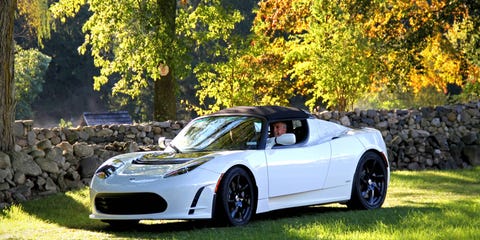Taking A Wholistic Marketing ™ Approach Means Building Marketing Into Every Facet Of Your Business To Help Ensure Growth Over The Long-term
What if I said there was a way to nearly guarantee your company’s growth and success over the years, what would you say? Probably something like, “That’s impossible.”, or “Sounds like a scam.”, “Keep walking, buddy.”. Right? I get it. Although, when you take a Wholistic Marketing™ approach it nearly guarantees success for a business and I can show you how.
What is Wholistic Marketing™?
Wholistic Marketing™ is the approach of building marketing into every facet of your business. When you look at a business through the lens of marketing, it forces you to build each aspect, each part, each department, each feature by focusing on the customer experience.
It forces you to stop asking, “How do I want this to look or perform?”, and start asking, “How does my ideal customer want this to look or perform?” This small shift in thinking pushes you to create an environment that people will have a personal ownership in, rather than just another company they bought something from.
For one of the greatest examples of this, look no further than one of the most successful and valuable companies to ever exist on planet Earth – Apple.
Apple – Predominant Wholistic Marketers
Since the mid-1980’s, Apple has put the customer experience at the forefront of their entire business model. They’ve performed countless hours of market research to understand exactly what people want from their laptops, desktop computers, handheld devices, and more.
Steve Jobs was so invested in the customer experience he hired two world-class practical economists, Steven Dubner and Stephen Levitt, authors of books like Freakonomics and When To Rob a Bank just to decide which way to position the apple logo on the face of the MacBook laptop.
Would it be best to orient the apple logo on a MacBook so that it was right-side up for the owner when opening the screen, or should it be upside-down so it looked correct to everyone else when open?
The Apple Logo Was Almost Upside Down?
Levitt and Dubner asked Jobs what his intention for the logo was? He responded that it would help build the Apple brand. With that, the Steve’s told him it’d be best to orient the apple logo so it looked proper to passers-bye. That way, people in coffee shops, libraries, college campuses, and other gathering places around the world would see a clean apple logo everywhere and think it was what they needed in their life, too.
Apple didn’t stop there with their wholistic approach either. Look no further than their Apple stores for another example with their now infamous “Genius Bars”.
Moving past how pretentious it is to call someone a “genius” just for knowing how to use a phone or tablet, we see that the real idea behind the “Genius Bar” was to serve the customer at the highest level. Can’t get your phone to load websites properly? Work with a genius to get it fixed. Want to transfer the data from your old phone to the new one? Let a genius help.
Apple even has a rider in their contracts that when their devices are used in Hollywood movies, their products can’t be used by the bad guys. Seriously, they didn’t skip a beat.
Don’t get me wrong, by no means is Apple a nice company. The whole business was started by a sociopath who was reportedly terrible to work for, screwed over partners left and right, and even disowned his own offspring for years.
However, because the company as a whole has a laser focus on the customers’ experience, they have grown into one of the most profitable companies in history. All of this in spite of being run by a modern day tyrant.
Why “Wholistic Marketing” Not “Wholistic Sales”?
So Apple has proven just how valuable it can be to run a business with a marketing-first approach, but why not take a sales-first approach? That’s where the real money is, right?

That may be true, but humans are instinctually resistant to sales. We hate when something feels salesy, which is not too far off of feeling sleazy.
We avoid sales people, even from a distance, and will avoid it at every chance we get. Even saying the word “sales” conjures up thoughts of the sleazy car salesman, right? Who wants that guy running their company? No one!
Don’t get me wrong, sales are vital to every business, and create the profits that pay the bills. Profits are essential for allowing businesses to continue innovating and making the world a better place. Not all businesses do that, but the good ones absolutely do.
However, there’s a major downside to relying purely on sales.
Putting sales in front of marketing means focusing on selling, rather than serving.
When a business focuses on selling they can certainly turn a profit. The businesses that focus on serving customers on a deeper level through wholistic marketing are the ones that exceed all expectations.
Tesla, $1 Trillion & Beyond
Tesla is another great example of what a Wholistic Marketing approach can deliver. Before Tesla released the first edition of their Tesla Roadster, hybrid and electric vehicles (EVs) in the United States were just sad, slow, dorky counterparts to their combustion engine rivals.
One of the first hybrids on the scene? The Honda’s “Insight”…
As a lifelong “car guy” myself, I remember literally LOL’ing when I saw the first commercial for this in my college dorm room…

I mean, really? What the heck was Honda thinking? A rear wheel skirt in 2001? Those went out of style in the U.S. in the 1950’s.
Anyone looking back at this massive blunder has to see that Honda didn’t really ask anyone (in the U.S.) if they cared about what a vehicle looked like. They just asked if Americans wanted to save money on gas. Yes? Great, here’s a POS you can drive off the showroom with the maximum amount of shame.
Enter, the Tesla Roadster:

This two seater supercar broke all the rules of what automakers thought Americans wanted from their hybrid and EV’s.
The Roadster was fast, sexy, and had an “F, U” quality to it that made it stand out. It even appealed to the environmentally-conscious folks it was intended for.
Tesla also broke the rules when it came to how they were going to sell cars to the public.
Walking into a dealership? Nope. Want a Roadster, stop by one of our boutique shops in a quirky part of town to build your own on a slick computer.
Drive it off the lot and risk crashing it seconds after taking delivery? Nope, we’ll drop it off at your home and teach you how to use it.
Need better mileage to avoid a hurricane? There’s an app update for that.
What was the payoff? Well, if you bought Tesla stock at their IPO in February of 2012, it’s increased, as of writing this article, 19,224.4%. In other words, if you invested just $1,000 in Tesla stock in 2012, today that investment would be worth $190,000.

$190,000 is almost enough to buy one of Tesla’s second edition Roadster, which is already stacking up to be one of, if not THEE, fastest production cars ever.

What Does It Take To Market “Wholistically”?
Since we’ve shown just how valuable putting the customer first in your business with wholistic marketing is, let’s take a look at what it takes to actually market a product or service “wholistically”. That’s right, I made that word up, fight me!
For what it’s worth, the only real requirement to wholistically market something is pulling yourself out of every aspect of the business. As an entrepreneur that may sound counterintuitive. You built the business from an original idea and risked it all. The product, the service, the systems, the whole darn thing is yours, right?
No. Businesses are created to perform one function, and one function alone – solve problems.
If you’re not doing that then you’re really just working on a vanity project that’s doomed to fail.
Companies that solve the right problems for the right people for the right price succeed.
Businesses that solve the right problem for the wrong people fail.
“Businesses” that don’t solve problems for anyone aren’t even businesses.
Have you ever heard the old saying, “That guy can even sell ice to an Eskimo.”?
Imagine actually trying to sell ice to an Eskimo? It’s stupid.
Well, that’s why 95% of all businesses fail within 5 years, and why 76% of those that make it past 5 years never gross more than $100,000/year in revenue.
Entrepreneurs all around the world are solving “problems” no one cares about, or trying to sell the solution to folks who don’t have the problem.
So, again, that’s why I say the easiest way to begin marketing a product or service wholistically is to simply remove yourself from the equation.
Put your customers’ needs front and center. Ask them what they want, what they need, what the problems are they’re facing, then keep solving them until they run out of issues.
(Pro tip: If you keep asking what they need next, they’ll keep telling you. One solution creates new problems for them, and new opportunities for your business.)
Why The ™?
I’m actually Trademarking the term “Wholistic Marketing”. Others may do it, but no one’s really putting a name to this vital tool for every business.
If you go online and look around at Digital Marketing Agencies, or Marketing experts in general, they all make the same claim…
“Doing [this one thing] in your business now is the only way to reach the next level. Sign up with our agency to take that next step.”
That’s BS. Growing a business takes a wholistic approach. It includes sales, marketing, systems, people, customers, profits, and more to make it all work. Anything less is a venture bound to fail.
What’s Your Marketing Approach?
How are you handling your marketing and product/service development today? Is it coming from customer insights and feedback, or are you just building things you think are cool and “know” will sell?
If there are areas of your business that aren’t doing as well as you’d like, start asking customers, users, and those actually involved in the process their thoughts. The answers may surprise you, but also lead to the major breakthroughs in taking your business to the next level.
Give us some feedback in the comments below. Love what we’re talking about here, hate it? Send the thoughts below… Good or bad, we’d love to hear from you.
Talk soon!
Sincerely,
Thomas Buttino – Wholistic Marketing™ Specialist



